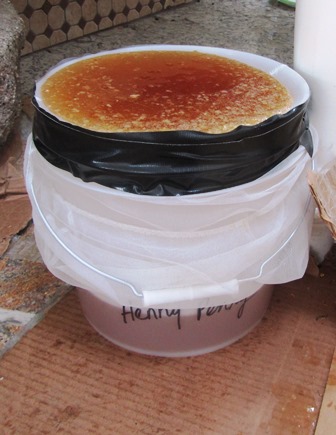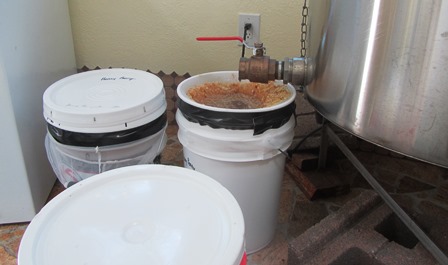Pulling Honey–A Bee-eautiful Sight to See
Nothing compares to the reward of pulling honey from a hive when you are a beekeeper. Over the last two days, this is what I’ve done with the help of my world-class beekeeper neighbor who knows more about keeping honeybees than anyone I’ve ever met.

Pictured is a Henny Penny Farmette honey bucket with strainer taped on and bits of wax in the honey on top
His wife helped me scrape off the bee glue from each frame and then open the capped cells (a must) before draining the honey. We then used their machine that can spin twenty frames at a time. It has an electric motor and a control to increase or decrease the speed. Use slow speed to begin and then when the frames grow lighter, you increase the speed.
In all, I spun four hive boxes full (ten frames each), except for one box that had fewer because we left two frames behind in the apiary. They still had babies in them.
We taped fine-mesh filters over the tops of several five-gallon buckets. To spin the honey out of the first eighteen frames took many hours, from noon to about ten o’clock at night. We left the machine spigot open all night to allow the draining to continue into the bucket. The filters caught bits of wax and even the occasional dead bee, ensuring the honey would be perfectly clean and ready to bottle.
I drained honey from the ten frames in each of my hive boxes–two of my hive boxes held the large frames and two held smaller frames. In all, we spun and drained enough honey to fill three five-gallon buckets and about one-fourth of a two and one-half gallon bucket.
Not a bad yield for a fairly young hive and during summer in a drought year when pollen-laden flowers are not be as plentiful. It’s a bee-eautiful sight to see!
 Facebook
Facebook Goodreads
Goodreads LinkedIn
LinkedIn Meera Lester
Meera Lester Twitter
Twitter






